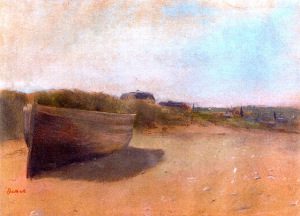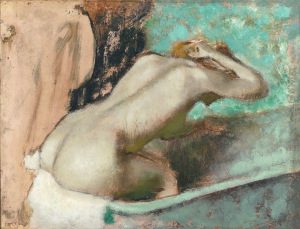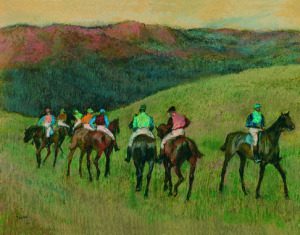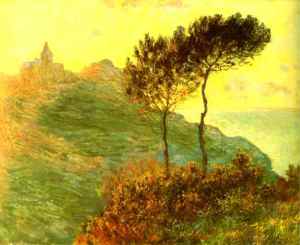Edgar Degas Adored Japanese Art: Ideas of Distance, Impressionism, and art of the Renaissance
Lee Jay Walker
Modern Tokyo Times
Ukiyo-e inspired many artists in distant lands and this includes Edgar Degas, who came to admire this Japanese art form. Edgar Degas (1834-1917) was born in Paris into a wealthy family and he was blessed to study at the Ecole des Beaux-Arts in this famous city. This intriguing individual in time would join the Impressionists movement but he also adored Renaissance art.
Therefore, after studying he moved to Italy and copied the great masters of the Renaissance for five years. During this period he learnt the richness of this artistic era and he would meticulously study artists from this period of history. Not only did he study in Italy about the heritage of Renaissance art but he also copied each detail based on methodology.
The Impressionists were also igniting the art world during his lifetime and Edgar Degas became deeply inspired by this artistic movement. Therefore, from 1874 to 1886 he also became fully embroiled in this art movement and entered his work to be shown in the many exhibitions of this timeframe. This period enabled Edgar Degas to expand and grow and not surprisingly the fusions of many different art forms blessed his art and creativity.
Ukiyo-e was also very important to Edgar Degas who was fascinated by the richness of Japanese art. Van Gogh commented that “I envy the Japanese artists for the incredible neat clarity which all their works have. It is never boring and you never get the impression that they work in a hurry. It is as simple as breathing; they draw a figure with a couple of strokes with such an unfailing easiness as if it were as easy as buttoning one’s waist-coat.”
Edgar Degas also loved the diversity and creativity of ukiyo-e and you can draw certain parallels with his art regarding ballet dancers, bathers, stage performers, and other areas. Van Gogh, Paul Gauguin, Claude Monet, and a host of other artists, felt the pull of Japanese art and clearly Edgar Degas was equally inspired. Therefore, if you change the ballet dancer and stage performers to bijin-ga and kabuki, you can see a rich vein materializing whereby his own artistic culture is fused with Japanese art.
Also, not only did Edgar Degas collect ukiyo-e prints but many of his friends had a deep knowledge of this art form. Indeed, artists like Utamaro, Hokusai, Sharaku (an individual shrouded in mystery), Hiroshige, and other famous ukiyo-e artists, were highly admired internationally. This factor clearly rubbed off onto Edgar Degas and just like Renaissance art and Impressionism had inspired him, the same can be said for Japanese art.
On the Yale Univeristy Press website Jill DeVonyar and Richard Kendall highlight the book called Degas and the Art of Japan. In this book, it says “Degas and the Art of Japan explores the French Impressionist’s lifelong fascination with the work of his Japanese counterparts. Adding substantially to previous studies, the authors propose new links between some of Degas’s characteristic themes, such as laundresses and horse racing, and the woodblock designs of Ukiyo-e masters. Fresh light is also shed on another signature trait of the artist—his fascination with women in their public and private lives—which is echoed in the prevalence of female subjects in Japanese woodblock imagery. Equally significant are revelations about Degas’s access to specific Japanese prints belonging to collectors and dealers in Paris.”
The book continues, “Works by Degas in all media are considered—paintings, pastels, drawings, lithographs, etchings, monotypes, and sculpture—and juxtaposed with Japanese prints, illustrated books, and decorated fans. Comparable human predicaments and parallels in visual language are all part of this wide-ranging analysis, which deepens our understanding of one of the world’s greatest artists.”
The book called Degas and the Art of Japan clearly digs deep within the many aspects of his life. This notably applies to the legacy of the Japanese connection and how ukiyo-e inspired this amazing artist. Therefore, just like other notable artists, he also understood the richness of ukiyo-e and this further sheds more light on this amazing art form to an international audience.
Dieter Wanczura, a notable individual with rich knowledge of Japanese art, comments “All things Japanese were suddenly stylish and fashionable. Shops selling Japanese woodblock prints, kimonos, fans and antiquities popped up in Paris like mushrooms. The Impressionist painters and Post-Impressionists like Claude Monet, Edgar Degas, Toulouse-Lautrec or Paul Gauguin were attracted and impressed by Japanese woodblock prints. In 1875 Claude Monet created his famous painting La Japonaise, showing his wife dressed in a Kimono and holding a Japanese fan.”
Overall, in this period of history, the artistic city of Paris gave growing stature to ukiyo-e. Yet, the individuality of Edgar Degas also shines through because he was also an intriguing artist who fused many different art forms within his work.
http://yalepress.yale.edu/book.asp?isbn=9780300126334
Modern Tokyo News is part of the Modern Tokyo Times group
DONATIONS to SUPPORT MODERN TOKYO TIMES – please pay PayPal and DONATE to sawakoart@gmail.com
http://moderntokyotimes.com Modern Tokyo Times – International News and Japan News
http://sawandjay.com Modern Tokyo Times – Fashion
https://moderntokyonews.com Modern Tokyo News – Tokyo News and International News
http://global-security-news.com Global Security News – Geopolitics and Terrorism
PLEASE JOIN ON TWITTER
https://twitter.com/MTT_News Modern Tokyo Times
PLEASE JOIN ON FACEBOOK






